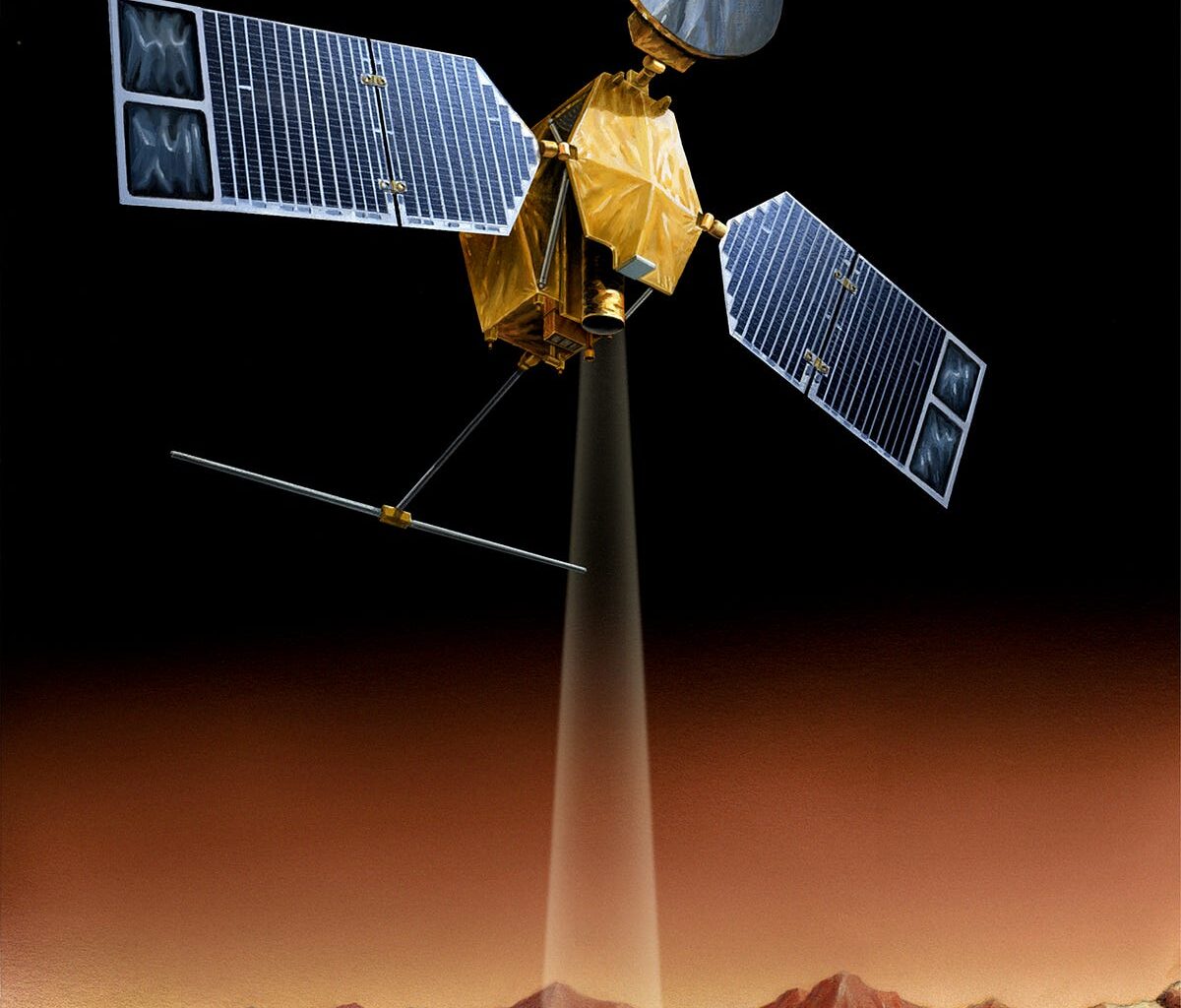![]() Press enter or click to view image in full size
Press enter or click to view image in full sizeArtist’s rendition of HiRISE imaging Mars onboard the Mars Reconnaissance Orbiter. (Credit: NASA/JPL)
Multiple sources informed me today that NASA is expected to release the HiRISE images of the interstellar object 3I/ATLAS within a few days from today, November 14, 2025
This is excellent news. We are curious to know the diameter of the nucleus and understand the geometry of the anti-tail from 3I/ATLAS towards the Sun. Our previous high-resolution image was obtained by the Hubble Space Telescope on July 21, 2025 (available here and analyzed here) and revealed an anomalous anti-tail extended towards the Sun instead of away from the Sun as is the case for a cometary tail containing refractory dust which is pushed by solar radiation. The Hubble image was taken from an edge-on perspective of the anti-tail since the line-of-sight was separated by merely 10 degrees from the direction of the Sun relative to 3I/ATLAS. The images from the HiRISE camera onboard the Mars Reconnaissance Orbiter would give us a side-view of the anti-tail, as well as a spatial resolution that is 3 times better than that of the Hubble Space Telescope. Even though the HiRISE image is unlikely to resolve the nucleus itself, it can set a tight constraint on the diameter of the nucleus based on the brightest pixel. A picture is worth a thousand words.
The HiRISE images were held hostage for bureaucratic reasons at NASA, as a result of the government shutdown for 43 days so far. The images should have a spatial resolution of ~30 kilometers per pixel and a side view of the anti-tail and jets from 3I/ATLAS on October 2–3, 2025, when it came within 29 million kilometers from Mars. Sharing of scientific data should have been prioritized over bureaucratic rules, because the data is time-sensitive as we plan additional observations of 3I/ATLAS.
In the meantime, we should be aware that there is an even larger object approaching the Sun from great distances. A comet larger than Lake Erie and ten thousand times more massive than 3I/ATLAS, is moving towards the Sun from the Oort cloud. It was discovered in 2014 by astronomers Pedro Bernardinelli and Gary Bernstein in archival images from the Dark Energy Survey and is known as C/2014 UN271 or Comet Bernardinelli–Bernstein (nicknamed BB). When first imaged, the object was 29 farther away from the Sun than the Earth is (29 AU = 4.3 billion kilometers), almost as far as Neptune. This represented the largest distance at which a comet has been ever discovered. The nucleus diameter of C/2014 UN271 is larger than 100 kilometers, making it the largest Oort cloud comet known. Its closest approach to the Sun will reach a minimum separation of 10.9 AU — just outside of Saturn’s orbit, in January 2031. It originated at a distance of order 40,000 AU about 1.4 million years ago.
Press enter or click to view image in full sizeA composite image of Comet Bernardinelli-Bernstein (C/2014 UN271) taken by the Hubble Space Telescope on March 28, 2022. The projected anti-solar vector, opposite to the direction of the Sun (in yellow) points to the lower left. (Credit: Wikimedia)
The rapid brightening of C/2014 UN271 at 20–25 AU is consistent with it being generated by sublimating carbon dioxide (CO2) or ammonia (NH3) ices from the nucleus’s surface. Carbon monoxide (CO) was just detected by the SPHEREx Space Observatory, but it is centrally concentrated compared to the extended CO2 emission.
Press enter or click to view image in full sizeDiagram of C/2014 UN271’s near-parabolic trajectory passing perpendicularly through the outer Solar System and arriving as close as 10.1 AU to the Sun. (Image credit: Wikimedia)
The orbital inclination of C/2014 UN271 is 95.5 degrees. Its nearly-perpendicular orbit relative to the ecliptic orbital plane of the Earth around the Sun implies that a direct rendezvous trajectory of a spacecraft from Earth is not technologically feasible. However, a rendezvous with C/2014 UN271 can be achieved through a Jupiter gravity assist after C/2014 UN271 has crossed the ecliptic, with optimal launch dates in 2030–2034 and a flight duration of about 15 years (as discussed here).
For now, we are all anticipating the release of the HiRISE images of 3I/ATLAS next week. The truth about the nature of 3I/ATLAS will be revealed by publicly shared data and not by any storyline of gatekeepers.
ABOUT THE AUTHOR
Press enter or click to view image in full size(Image Credit: Chris Michel, National Academy of Sciences, 2023)
Avi Loeb is the head of the Galileo Project, founding director of Harvard University’s — Black Hole Initiative, director of the Institute for Theory and Computation at the Harvard-Smithsonian Center for Astrophysics, and the former chair of the astronomy department at Harvard University (2011–2020). He is a former member of the President’s Council of Advisors on Science and Technology and a former chair of the Board on Physics and Astronomy of the National Academies. He is the bestselling author of “Extraterrestrial: The First Sign of Intelligent Life Beyond Earth” and a co-author of the textbook “Life in the Cosmos”, both published in 2021. The paperback edition of his new book, titled “Interstellar”, was published in August 2024.

